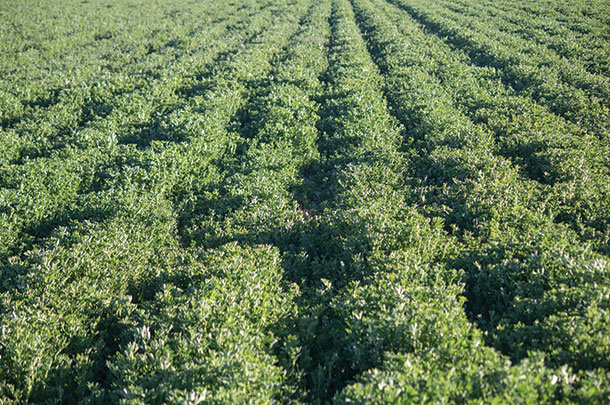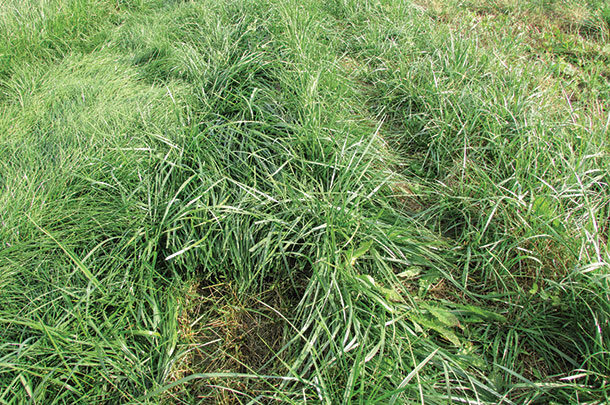After a week of blinding frustration, he took it back to the vendor and informed them that his bucksaw was way faster and he wanted his money back. Surprised, the vendor primed and choked the chainsaw, pulled the cord – and it roared to life.
Alarmed, the formerly disappointed customer leaped back and shouted, “What’s that noise?” If the story has a moral, it has got to be that our own lack of understanding or inappropriate expectations are often to blame for our biggest disappointments.
So often, we are disappointed with this piece of machinery or that forage species or variety because we (or someone else) had inflated its potential or misunderstood its best application.
In the realm of forages, virtually all species have (or had) a niche in which they fit quite well, but many of them have very different management requirements in order to perform optimally. If this is not understood at the outset, disappointment will follow.
While entire books have been devoted to explaining and expounding individual species, there are some big-picture concepts for each species that are important to understand before and during your initial foray with a particular new forage species. My purpose here is to present some of these important concepts that are often underappreciated.
Let’s look at alfalfa
Many of you grow alfalfa and love it. Others have tried and have been exceedingly frustrated. Many of those who have been disappointed understand that alfalfa is not generally well suited to heavy textured soils (i.e., high clay content) or soils that tend to be wet for other reasons.

Still others point out that while the fiber levels of alfalfa are generally lower than grass, the fiber digestibility is not nearly as high as that of grass. Here are some other things about alfalfa it is better not to learn the hard way:
- Soil pH should be close to the 6.8 to 7.0 range if you want to optimize its performance. While some forage species tolerate a broad soil pH range, alfalfa does not.
- While alfalfa needs all of the same nutrients other plants need, having sufficient levels of available potassium present will improve crop yield, disease resistance and winter hardiness.
- All legumes benefit significantly from careful management of boron (a micronutrient). Boron, by the way, is one of those things where too much is not better. On soils that test medium or low in boron, it is recommended that 2 to 3 pounds of boron be applied to alfalfa once per rotation. Sandy fields should receive 0.5 to 1 pound per acre of boron each year.
- While no plants respond positively to wheel or hoof traffic, the crowns of alfalfa plants are particularly sensitive to it. Those who want to optimize alfalfa yield and stand longevity should endeavor to control wheel and hoof traffic, especially when the plants are fragile and the soils are soft.
There are some alfalfa varieties described as having a “sunken crown” that may offer benefits for increasing traffic tolerance.
- While there are some varieties better than others for grazing, alfalfa is not generally known to be an excellent fit for the average grazier.
If you want to make it work as a grazing species, choose a variety that has been selected for that purpose, be aware of how the soil conditions (soft/wet) influence the effect of hoof traffic on plants, provide adequate regrowth intervals and make sure animals are not on each paddock long enough that they are grazing regrowth from within that grazing interval.
- The forage quality of alfalfa is excellent if it is harvested on time. Using the PEAQ method developed by University of Wisconsin will help you hit your forage quality targets.
- The last harvest should come at a point when historical weather data suggests you either have more than 500 or less than 200 growing degree days (base 41) remaining in the season. Failing to do this will reduce winter survival of the alfalfa plants.
‘Mammas, don’t let your babies grow up to raise fescue’?
While tall fescue is high yielding and persistent, it has a terrible reputation among many in the “fescue belt” of the U.S. To some, planting fescue is akin to inoculating your house with live bedbugs. Why would you do that? But times have changed.
The problem with “old” types of tall fescue is that they usually have a toxin-producing fungus (i.e., “endophyte”) that lives in the living plant tissue. Newer tall fescue varieties are either endophyte-free or have a “friendly” endophyte that still benefits the plant but does not produce toxic effects in livestock.
The Northeast is cooler and wetter than the area where tall fescue has traditionally been grown and, absent heat stress, even the endophyte-free varieties grow very well here.
Tall fescue will generally yield more than other forage grass species, but all other things being equal, tall fescue neutral detergent fiber levels are generally lower than orchardgrass on the same calendar date.
While this is partly due to it being somewhat later-maturing than orchardgrass, it also seems that forage breeders have invested significant effort to this end, in addition to paying attention to neutral detergent fiber digestibility in their breeding work.
Dairy farmers in the Northeast are increasingly planting endophyte-free or friendly endophyte tall fescue in haylage fields. Aside from having high yield potential and very good forage quality, it is also persistent, winter-hardy and can grow in diverse soil types. It is worth noting that tall fescue can “play nice” with orchardgrass (preferably a later-maturing variety), red clover and alfalfa.
So what’s the problem?
Producers who hate the endophyte-free or friendly endophyte tall fescues generally are those who do not anticipate its aggressive growth. Soil fertility management is similar for tall fescue as it is for other grass species. As with many other aggressive forage grasses, overapplication of nitrogen to a mixed stand will result in a decline of the legume component.
Like all perennial grasses, tall fescue forage quality declines rapidly as it matures. If you are a producer who lives in an area where the dairy farmers get four to five cuts but you prefer to take two cuts, tall fescue probably will not be a great fit if you are pursuing dairy-quality feed.
While some plant breeders have focused on bringing more leaf softness into certain tall fescue varieties, the leaves are still noticeably coarser than most other grass species. This texture difference often results in selective grazing, so for pasture purposes it is generally better to plant it as the sole grass species or not at all.
In a solid tall fescue stand or a stand with a well-distributed legume population (such as ladino white clover), selective grazing should not be much of a problem.
Does the coarser leaf texture affect performance on pasture? A study conducted in Wisconsin demonstrated that intake and lactation of dairy cows was not adversely affected when cows were grazed on endophyte-free tall fescue/kura clover pastures.
Another Wisconsin study showed that actually steers gained 22 percent more weight on tall fescue than orchardgrass.
No plant species will solve all of your forage production woes, but understanding the differences among species will help you have appropriate expectations and manage for improved forage yield, quality and persistence. ![]()
PHOTO 1: Tall fescue generally yields more than other forage grass species. This photo was taken in October, and the plot had been harvested several times since its seeding in May. Photo courtesy of Daniel Hudson.
PHOTO 2: Alfalfa is a popular legume in many parts of the country. However, it is not well suited to heavy textured soils or soils that tend to be wet for other reasons. Staff photo.

-
Daniel Hudson
- Agronomist and Nutrient Management Specialist
- University of Vermont
- Email Daniel Hudson











